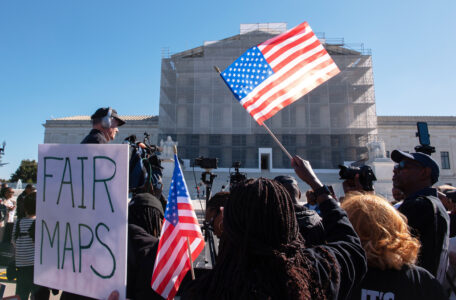Nashua Neighborhoods: Bicentennial is best in city for income, education
Editor’s note: Neighborhoods by the Numbers is an occasional series profiling Nashua neighborhoods by digging into economic data.
NASHUA – At Roby Park near Bicentennial Elementary School, Shashi Murthy pushed her preschool-age daughter on a swing and chatted with another mom.
Murthy is an engineer, and her husband is a dentist. Right now, she said, their daughter is in a day care with hours from 6:30 a.m.-6 p.m., which accommodates their schedules.
“I don’t know what will happen when she gets to kindergarten and first grade,” she said – the girl may need a stay-at-home parent to be there for her after school.
“If we had to, it’s going to be me, I guess,” she said. “He makes more than I do.”
The question Murthy’s family will face is one that seems to be common around Bicentennial. Based on census statistics, in many of the area’s families, mom either stays at home or works but makes significantly less than dad.
Murthy confirmed that most of the other women in her condo association who have children stay home.
The Bicentennial neighborhood – as defined by Hillsborough County Census Tract 112, which runs from Route 3’s Exit 4 down to the Massachusetts border and skirts Roby Park on its eastern edge – is the richest in Nashua, with a median income of more than $110,000. There are modest ranch houses, but there are also lots of winding, cul-de-sac streets with professionally landscaped lawns and towering modern-construction homes.
And there’s a healthy amount of children, with 7.1 percent of the population younger than 5, which is on the higher side for the city of Nashua.
From 2007-11, census data shows, the percentage of women in the labor force – either working or looking for work – was the second-lowest in the city, 59 percent. The lowest area was around Main Street, where a large percent of residents are older than 65 and less than half are in the labor force, regardless of gender.
That number makes Bicentennial stand out not only in the city but within South Nashua. In nearby tract 114.01, which covers the area around Lovewell Pond, women have one of the highest participation rates in the workforce, at 74 percent.
The large number of women staying home in Bicentennial may be related to the sort of situation Murthy mentioned. When one parent makes significantly more than the other, becoming a one-income family may seem like an obvious solution to child care pressures.
And in the Bicentennial neighborhood, that situation seems to be very common. The median income for women in the neighborhood working full-time is $51,250, around the same as several other city neighborhoods.
For men, though, the number is $94,259, the highest in the city by nearly $25,000. Full-time working women in the area make about 54 percent of their male counterparts’ wages, which is by far the lowest ratio in the city.
Laura Telerki and her husband have three children, one at Bicentennial, another in middle school and the third in high school.
“I stopped working once the child care costs outweigh the benefits,” she said.
Telerki is now a volunteer coordinator at Bicentennial and also volunteers at Fairgrounds Middle School. She has been a parent-teacher organization president, and even though she doesn’t work for pay, she spends a lot of time working in those kinds of unpaid capacities.
“It’s hard to add up the hours as little things all come in,” she said.
Telerki said stay-at-home moms are a part of the core group of parents who help out at Bicentennial, but she said there are also plenty of others. Working mothers – and fathers – make up about half of the PTO, she said.
“One of our PTO presidents is a dad who just simply has a flexible schedule,” Telerki said.
If Bicentennial Elementary School benefits from the presence of parents with schedules that let them help out, it also attracts those families. The school consistently scores higher than other city schools on standardized tests, and many families see it as a major reason to move to the neighborhood.
“When we went to buy a house, we specifically looked for Bicentennial – or out of Nashua,” said Jessica Ross, whose daughter is in preschool.
Ross and her husband both work, but she said her job in publishing is more flexible, allowing her to handle school drop-offs and pick-ups.
And education is highly valued in the Bicentennial area, where 64 percent of residents have a bachelor’s degree or more education, also by far the highest percentage in the city.
Robin Couturier said she and her husband moved to the area, partly because of Bicentennial Elementary School, around the time her first child was born. Couturier is a dental assistant, working 10-hour days three days a week to leave her more time with her boys, who are 3 and 6.
“My boss is very kind,” she said.
Couturier said her family also benefits from her husband’s hours – he starts work early and gets out at 3 p.m., giving him some time with the boys in the afternoons.
“You make adjustments because you want the best for your kids,” she said.
View an interactive
map of the 18 neighborhoods in Nashua at www.nashuatelegraph.com.



